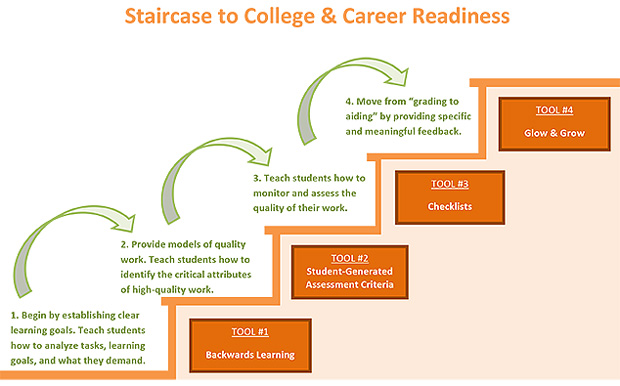The Thoughtful Classroom Teacher Effectiveness Framework™
Tools for Improving Practice
Administrator TIP Sheet
This series is designed to provide administrators with ideas and ready-to-use tools to better implement The Thoughtful Classroom Teacher Effectiveness Framework.
ADMINISTRATOR TIP #1
A Potpourri of Posing Questions
Many administrators have found “The Four Ps to Better Feedback” to be a useful tool for guiding post-observation conferences with their teachers. (Need a quick refresher on the Four Ps? Click here.) Many of these administrators have shared that finding things to praise about an observed lesson and remaining cognizant of the need to provide evidence (without value statements, such as “I liked…”) have been particularly helpful in making their post-observation conversations more productive.
However, the one area of the Four Ps that seems to present the greatest challenge is the P known as posing. Administrators have told us that developing questions that foster deep reflection on instruction and connect directly to specific dimensions in the TCTEF can often be difficult. In response, our Thoughtful Classroom team put our heads together and developed a “Potpourri of Posing Questions for the Nine Instructional Dimensions” (click here to download). Recognizing that each of the dimensions is equally important to classroom instruction, we have developed ten posing questions for each dimension.
Here are a few caveats to keep in mind as you think about how you might use these questions:
- The “lines” between each dimension are porous. In other words, a question can apply to more than one dimension.
- The Four Cornerstones of Effective Teaching (Dimensions 1-4) are always in play for every lesson in every content area. Therefore, you might select several of these cornerstone questions to set the stage for your post-observation conversation.
- Just as we would never expect to see all of the indicators from a dimension in a single lesson, we would not expect to employ all ten questions from a dimension in a single post-observation conference. Use questions judiciously and adapt them to the specifics of what you observed. A few focused questions will do much more good than a “laundry list” of questions, which will likely scatter a teacher’s attention.
ADMINISTRATOR TIP #2
Roles and Responsibilities for Formal Observations
In our previous issue, we looked at “The Four Ps to Better Feedback” because many administrators who use the Four Ps to guide post-observation conferences with teachers requested more ideas for asking quality posing questions. We’ve also heard from administrators looking for ideas to improve pre- and post-observation conferences. So, for this issue, we’re going to take a step back for a broader view of the entire formal observation process. Specifically, we’ve identified the critical roles and responsibilities for teachers and administrators during all four phases of the formal observation process: pre-observation conference, classroom observation, post-observation conference, and written evaluation. (Click here to download Roles and Responsibilities for Formal Observations.)
ADMINISTRATOR TIP #3
Climbing the Staircase to College & Career Readiness
How do we prepare students to succeed on new and more rigorous assessments? The truth is we can develop and administer all of the assessments in the world, but if we don’t develop students’ quality-control skills—if we don’t teach students how to plan, execute, assess, and improve their own work—then their performance will likely improve only marginally. Even worse, we won’t be doing our students any favors when it comes to preparing them for college and careers in the 21st century, which require high levels of self-direction. Instead of administering test after test, we need an approach that empowers students to take control of their learning and use it to improve their work.
This approach is best represented by a staircase or a series of instructional steps teachers can take to help students develop the self-assessment skills that lead to better and more self-directed work.
On the left side are the instructional steps and on the right are tools from Tools for Thoughtful Assessment that help your teachers accomplish each move—and that help all students climb the staircase towards college and career readiness. (Click here to download these four tools to try in the classroom!)

